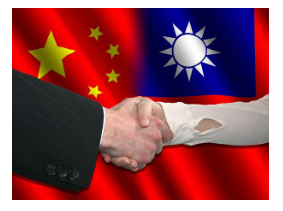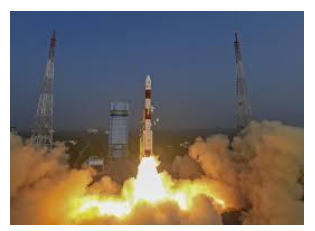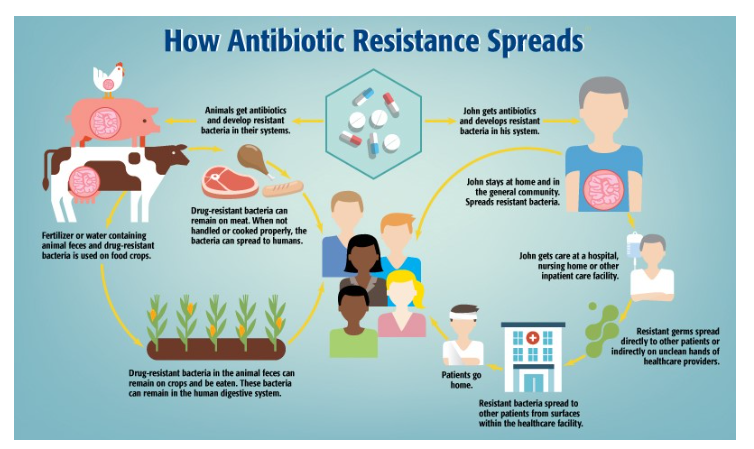Tuesday, 16th January 2024
Maldives Urges India to Withdraw Troops by March 15
In News: President Mohamed Muizzu of the Maldives has requested that India withdraw its troops from the island nation by March 15.
India-Maldives Bilateral Relations
- Historical Ties and Recognition
- Recognizing Maldives' independence in 1965, India established diplomatic relations early on.
- Shared ethnic, linguistic, cultural, religious, and commercial links foster close relations.
- First Responder and Security Provider
- Prompt assistance during the 1988 coup attempt built trust.
- Operation Cactus saw Indian Armed Forces neutralizing the coup.
- Aid during the 2004 Tsunami and the 2014 Malé water crisis showcased India's support.
- Rapid response with 30,000 measles vaccine doses in Jan 2020.
- Comprehensive assistance during the COVID-19 pandemic solidified India's role as the first responder.
- Security & Defence Cooperation
- Comprehensive Action Plan for Defence (April 2016)
- Strengthened defence partnership.
- Annual Defence Cooperation Dialogue initiated in July 2016.
- Training Opportunities
- India provides 70% of Maldivian National Defence Force (MNDF) training.
- Over 1500 MNDF trainees trained in the past decade.
- Comprehensive Action Plan for Defence (April 2016)
- Development Cooperation
- Major Completed and Ongoing Projects
- Projects like Indira Gandhi Memorial Hospital, Maldives Polytechnic, and Faculty of Hospitality & Tourism Studies.
- Technology Adoption Programme in Education Sector and National College for Police and Law Enforcement.
- Infrastructure & Connectivity Projects funded by Exim Bank Line of Credit of US$ 800 million.
- Specific Projects Under Implementation
- Water and Sanitation in 34 Islands.
- Addu Development Project (Roads and Land Reclamation).
- Cancer Hospital, Gulhifalhu Port project, Hulhumalé Cricket Stadium.
- Greater Male Connectivity Project linking Male to Villingili, Gulhifalhu, and Thilafushi islands.
- Major Completed and Ongoing Projects
- Bilateral Economic and Trade Relations
- Trade Partnership
- India emerged as Maldives' 2nd largest trade partner in 2022.
- Total bilateral trade reached $501.82 million in 2022.
- Financial Assistance
- In November 2022, India provided financial assistance of US$ 100 million.
- Currency Swap Agreement
- In December 2022, the RBI signed a Currency Swap Agreement with the Maldives Monetary Authority (MMA).
- Trade Partnership
- Tourism from India to Maldives
- In 2023, Indians constituted the largest group of tourists, exceeding 200,000 travelers.
- Indian Community in Maldives
- Indians are the second-largest expatriate community with around 22,000 individuals.
- Approximately 25% of Doctors and Teachers in Maldives are Indian nationals.
Source: TH
Lentil Production India
In News: According to the Ministry of Consumer Affairs, India is poised to become the leading global producer of lentils (masoor) in the 2023-24 crop year due to increased cultivation.
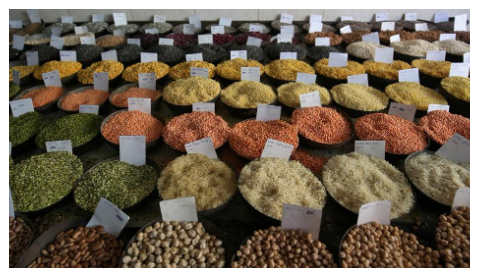
Understanding Lentils
- Overview
- Lentils are herbaceous plants belonging to the legume family, characterized by bushy annual growth.
- Edible legumes, lentils have flat, lens-shaped seeds and short, self-pollinated flowers.
- Nutritional Value
- Lentil grains are rich in energy, carbohydrates, protein, fat, fibers, phosphorus, iron, zinc, carotene, vitamins, and antioxidants.
- Cultivation Factors
- Climatic Conditions
- Grown as a rainfed crop, lentils thrive in cold temperatures during vegetative growth and warm temperatures at maturity.
- Predominantly cultivated during the rabi season.
- Soil Types
- Lentils adapt to various soil types, favoring deep sandy loam soils with moderate fertility.
- Ideal soil pH is around 7, and lentils are intolerant to flooding or waterlogged conditions.
- Climatic Conditions
- Growing Regions
- Mainly cultivated in Uttar Pradesh, Madhya Pradesh, Bihar, West Bengal, Chhattisgarh, and Jharkhand.
- The Bundelkhand region of Uttar Pradesh and Madhya Pradesh is a significant lentil production hub, contributing approximately 25% to the country's total lentil production.
- According to the Food and Agriculture Organization (FAO), top global lentil growers in 2022 were Canada, India, Australia, Turkey, and Russia.
Government Initiatives to Boost Pulses Production in India
- Policy Support
- Ensuring reasonable prices for farmers involves procuring pulses through Minimum Support Prices (MSP) via organizations like the National Agricultural Cooperative Marketing Federation of India (NAFED) and, more recently, the Small Farmers Agri Consortium (SFAC).
- National Food Security Mission (NFSM)-Pulses
- A government initiative focused on enhancing pulses production.
- ICAR's Role in Research and Variety Development
- The Indian Council of Agricultural Research (ICAR) plays a crucial role in research and developing varieties to improve lentil cultivation.
- Pradhan Mantri Annadata Aay SanraksHan Abhiyan (PM-AASHA) Scheme
- A scheme aimed at safeguarding the income of farmers and ensuring their welfare in the agricultural sector.
|
UPSC Previous Year Questions Prelims (2020) Q. With reference to pulse production in India, consider the following statements:
Which of the statements given above is/are correct? (a) 1 only Ans: A Mains (2017) Q. Mention the advantages of the cultivation of pulses because of which the year 2016 was declared as the International Year of Pulses by United Nations. |
Source: TH
Revitalizing Organ Transplantation
In News: The Delhi High Court has recently suggested an ideal timeframe of 6-8 weeks for the completion of organ transplant procedures that involve living donors.
The Transplantation of Human Organs and Tissues Act, 1994
- Overview
- Governs the transplantation of human organs and tissues in India, including post-mortem organ donation.
- Sets regulations for healthcare providers and hospitals, with penalties for violations.
- Organ Donors and Recipients
- Allows transplants from deceased persons' organ pools or living donors with a close relationship.
- Permits living donations from close relatives, including parents, siblings, children, spouses, grandparents, and grandchildren.
- Altruistic donations from distant relatives or friends are allowed with additional scrutiny.
- Documentation required for living donations from close relatives, whether Indian or foreign.
- Donations from Unrelated Persons
- Requires proof of long-term association or friendship for donations from unrelated persons.
- External committees examine documentation to prevent illegal dealings.
- Fines and Punishments
- Criminalizes paying for organs or supplying them for payment.
- Offers penalties, including up to 10 years in jail and a fine of up to Rs 1 crore.
- Formation of NOTTO
- National Organ and Tissue Transplant Organization (NOTTO) established under the Directorate General of Health Services.
- Mandated by the Transplantation of Human Organs (Amendment) Act 2011.
The Transplantation of Human Organs and Tissues Rules, 2014
- Authorisation Committee
- Rule 7 outlines the constitution and responsibilities of the Authorisation Committee.
- Ensures ethical compliance and prevents commercial transactions for non-relatives.
- Living Donor Transplantations
- Rule 10 details the application process for living donor transplantations.
- Rule 21 requires personal interviews by the Committee to determine eligibility.
- Role of Authorisation Committee
- Section 9(4) dictates the composition of the Authorisation Committee.
- Section 9(5) mandates a thorough inquiry to verify authenticity and prevent commercial motives.
- Parliamentary Approval
- Section 24 allows the Centre to make rules for Act implementation, subject to parliamentary approval.
High Court Decision on Authorisation Committees
- Constitution of Committees
- Mandates state governments/Union Territories to form Authorisation Committees.
- Emphasizes the committees' role in maintaining organ transplantation integrity.
- Timelines for Living Donor Transplantation Application
- Limits processing time to a maximum of 10 days from application.
- Requires domicile status verification within 14 days.
- Scheduled Interviews and Family Meetings
- Interviews and family meetings should be scheduled within four to six weeks of application.
- Decision communication within six to eight weeks.
- Recommendations to Government
- Calls for presenting the judgment to the Secretary, Ministry of Health and Family Welfare.
- Advocates prescribing timelines for organ donation application steps after consulting stakeholders.
Source: IE
Severe Air Quality in Delhi
In News: On January 14, the air quality in Delhi reached the 'severe' category with an average AQI of 447.
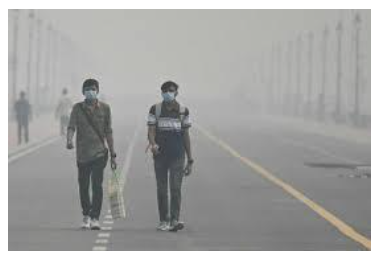
Understanding the Air Quality Index (AQI)
- Introduction
- Launched in October 2014 to provide easily understandable air quality information to the general public.
- Measurement Criteria
- Based on eight pollutants: PM10, PM2.5, NO2, SO2, CO, O3, NH3, and Pb.
- Transforms complex data into a single number for simplicity.
Commission for Air Quality Management (CAQM)
- Formation and Purpose
- Established under the Commission for Air Quality Management in National Capital Region and Adjoining Areas, Act 2021.
- Aims at improved coordination, research, identification, and resolution of air quality issues in NCR and adjoining areas.
Graded Response Action Plan (GRAP)
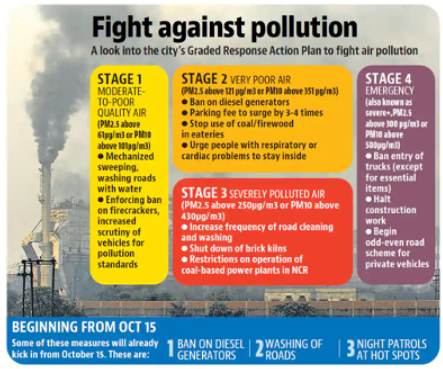
- Overview
- Emergency measures to prevent further deterioration of air quality in Delhi-NCR.
- Approved by the Supreme Court in 2016 and notified in 2017.
- Development Process
- Formulated after consultations between the Environment Pollution (Prevention and Control) Authority (EPCA), state governments, and experts.
- Scope and Limitations
- Functions as an emergency response, not addressing year-round actions for industrial, vehicular, and combustion emissions.
Implementation Stages of GRAP
- Incremental Measures
- Stage 1: AQI in the ‘poor’ category (201 to 300).
- Stage 2: AQI in the ‘Very poor’ category (301-400).
- Stage 3: AQI in the ‘Severe’ category (401-450).
- Stage 4: AQI in the ‘Severe +’ category (more than 450).
Source: IE
Heat-Tolerant Vaccine
In News: The Indian Institute of Science (IISc) has developed a heat-tolerant vaccine effective against all existing SARS-CoV-2 strains and adaptable for future variants.

Key Points About the IISc-Developed Vaccine
- Background
- Current vaccines, while effective against many SARS-CoV-2 strains, face reduced efficacy due to rapid virus mutation.
- Antigen Selection
- Researchers chose two components of SARS-CoV-2's spike protein – the highly conserved S2 subunit and the Receptor Binding Domain (RBD).
- A hybrid protein, RS2, was created by combining these selected components.
- RS2 Antigen Characteristics
- RS2 can be customized to incorporate the RBD region of any new SARS-CoV-2 variant, including XBB.1.5 and JN.1 variants.
- Addresses concerns related to the virus's rapid mutation.
Storage and Distribution
- RS2 antigen can be stored at room temperature for a month without requiring cold storage.
Economic Advantage
- Reduced production and distribution costs make RS2 economically viable.
|
UPSC Previous Year Questions Prelims (2022) Q. In the context of vaccines manufactured to prevent COVID-19 pandemic, consider the following statements:
Which of the statements given above are correct? (a) 1 and 2 only Ans: (b) |
Source: TH
Mahanadi River Basin
In News: In the Bay of Bengal, the state-owned Oil and Natural Gas Corporation (ONGC) has recently identified two substantial natural gas reserves in the Mahanadi basin block.
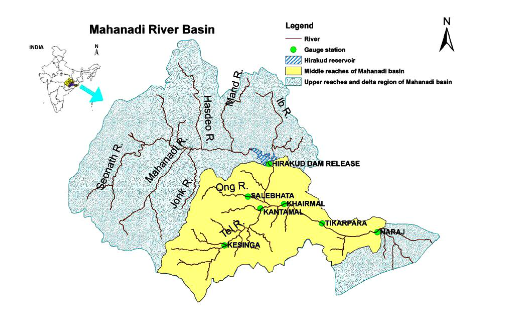
Mahanadi River Basin Overview
- Geographical Significance
- The 8th largest river basin in India, covering 139681.51 sq. km, approximately 4.28% of the country's total geographical area.
- Catchment Area and Extent
- The basin spans major parts of Chhattisgarh and Odisha, with smaller portions in Jharkhand, Maharashtra, and Madhya Pradesh.
- Maximum length and width of the basin are 587 km and 400 km, respectively.
- Physiographic Divisions
- Divided into four regions: northern plateau, Eastern Ghats, coastal plain, and erosional plains of the central tableland.
- Northern plateau and Eastern Ghats are hilly regions, while the coastal plain is a fertile delta area.
- Central tableland is the basin's interior region traversed by the river and its tributaries.
- Rainfall and Land Use
- Receives 90% of rainfall during the monsoon season.
- Over half of the basin is agricultural land (54.27%), with water bodies covering 4.45%.
- Dominant soil types are red and yellow soils.
Key Facts about Mahanadi River
- East-Flowing Peninsular River
- One of the major east-flowing peninsular rivers in India.
- Origin and Length
- Originates from the Sihawa range of hills in the Dhamtari district of Chhattisgarh.
- Ranks second in water potential among peninsular rivers.
- Total length from origin to outfall into the Bay of Bengal is 851 km, with 357 km in Chhattisgarh and 494 km in Odisha.
- Tributaries
- Left-bank tributaries include Seonath, Hasdeo, Mand, and Ib.
- Right-bank tributaries include Ong, Tel, and Jonk.
- Hirakud Dam
- Hirakud Dam, the world's longest earthen dam (26 km), is constructed across the Mahanadi River, 15 km from Sambalpur in Odisha.
- Chilika Lake Connection
- Chilika, a wetland of international importance under the Ramsar Convention, receives 61% of its inland flow from the Mahanadi River system, primarily from its distributaries, Daya and Bhargabi.
Source: LM
Punganur Cow
In News: Recently, the Prime Minister was observed personally feeding a group of Punganur cows with fodder at his residence in New Delhi.
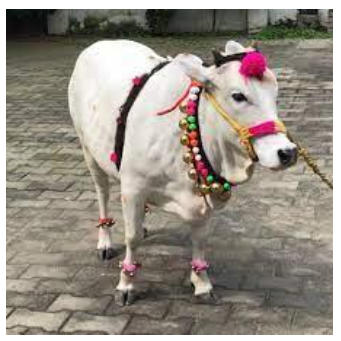
About Punganur Cow
- Dwarf Characteristics
- Stands at a height of 70-90 cm and weighs less than 200 kg.
- One of the world's most dwarf cattle breeds.
- Native Habitat
- Indigenous to Punganur village in the Chittoor district of Andhra Pradesh.
- Resilience and Adaptability
- High resilience to drought conditions.
- Can adapt to low-quality feed.
- Milk Quality
- Prized for its milk with higher fat content, making it ideal for ghee production.
- Yields approximately 1 to 3 litres of milk per day.
- Milk fat content is 8%, compared to 3 to 4% in other native breeds.
- Nutrient-rich Milk
- Rich in nutrients such as Omega fatty acids, calcium, potassium, and magnesium.
- Physical Characteristics
- Body color ranges from white, grey, or light brown to dark brown or red.
- Some may have a combination of white with red, brown, or black patches.
- Broad forehead and short crescent-shaped horns that curve backward and forward in males and laterally and forward in females.
- Eco-friendly Traits
- Considered eco-friendly, requiring less water, feed, and space compared to hybrid breeds.
- Cultural Significance
- Used for Ksheeraabhishekam (milk offering to the deity) in many temples in Andhra Pradesh, including the renowned Tirupati Thirumala Temple.
Source: News18
Astra Missile
In News: Recently, the Minister of State for Defence ceremonially initiated the dispatch of domestically developed Astra Missiles to the Indian Air Force (IAF) at Bharat Dynamics in Hyderabad.
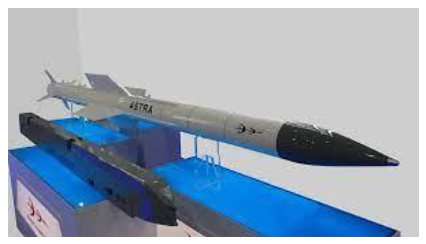
About Astra Missile
- Introduction
- Astra is a beyond-visual-range (BVR) air-to-air missile designed for fighter aircraft.
- Developed indigenously by the Defence Research and Development Organisation (DRDO) and manufactured by Bharat Dynamics Ltd. (BDL) for the Indian Air Force (IAF).
- Engagement Capability
- Designed to engage and destroy highly manoeuvring supersonic aircraft.
- Recognized as the world's best in the air-to-air missile category.
- Variants and Development
- Developed in multiple variants to cater to specific requirements.
- The ASTRA Mk-I Weapon System is integrated with SU-30 Mk-I aircraft and is inducted into the Indian Air Force (IAF).
- ASTRA Mk-I Features
- Range of 80 to 110 km in a head-on chase.
- Travels at a speed of 4.5 Mach (almost hypersonic).
- Equipped with a locally developed Ku-band active radar guidance system and a 15-kg warhead.
- Provides the pilot with the option of "Lock on Before Launch – LOBL" and "Lock on After Launch – LOAL," allowing the aircraft to shoot and retreat after firing towards the target.
- Advanced Technology
- Based on advanced solid-fuel ducted ramjet (SFDR) engine technology.
- Operational Capabilities
- Capable of operating under all weather conditions, both day and night.
- Offers high overall reliability and a very high "Single Shot Kill Probability – SSKP."
Source: TOI
Indian Army Day
In News: Recently, the President and Prime Minister extended their heartfelt wishes to the personnel of the Indian Army on the occasion of Army Day.
Indian Army Day Overview
- Date of Celebration
- Indian Army Day is observed annually on January 15.
- Celebration Highlights
- On Army Day, a parade is conducted with senior dignitaries in attendance, and the Indian Army Chief takes the salute.
- Historical Significance
- Commemorates the victory of the Indian Army over the British Army.
- On January 15, 1949, Field Marshal K.M. Cariappa assumed the role of the first Indian Commander-in-Chief, succeeding British Commander-in-Chief General Francis Butcher.
- Parade Venue Evolution
- From 1949 to 2022, the Army Day parade traditionally took place at the Cariappa Parade Ground in Delhi Cantonment.
- In 2023, the Southern Command hosted the parade in Bengaluru, marking the first instance of the event being held outside the capital.
- Indian Army Day 2024
- Marks the 76th Army Day.
- The parade for 2024 will be organized under the command of the Army's 'Central Command,' headquartered in Lucknow.
- Theme of Indian Army Day 2024
- The theme is “In Service of the Nation.”
- The theme aligns with the Indian Army's motto, "Service Before Self."
Source: HT
Genetic Engineering Appraisal Committee (GEAC)
In News: The Supreme Court has recently queried the Centre on why the reports from the court-appointed Technical Experts Committee (TEC) regarding the biosafety of genetically modified (GM) crops were not considered by the Genetic Engineering Appraisal Committee (GEAC).
Genetic Engineering Appraisal Committee (GEAC) Overview
- Establishment
- Constituted under the "Rules for the Manufacture, Use/Import/Export and Storage of Hazardous Microorganisms/Genetically Engineered Organisms or Cells (Rules, 1989)" framed under the Environment (Protection) Act, 1986.
- Administrative Umbrella
- Operates under the Ministry of Environment, Forest, and Climate Change (MoEF&CC).
- Functions
- Responsible for approving activities involving the large-scale use of hazardous living microorganisms and recombinants in research and industrial production from an environmental perspective.
- Appraises proposals related to the release of genetically engineered (GE) organisms and products into the environment, including experimental field trials.
- Mandatory clearance required for the environmental release of genetically modified (GM) crops.
- Empowered to take punitive action under the Environment Protection Act.
- Composition
- Chaired by the Special Secretary/Additional Secretary of MoEF&CC.
- Co-chaired by a representative from the Department of Biotechnology (DBT).
- Presently comprises 24 members.
- Holds monthly meetings to review applications, with members including experts from ministries, institutions like ICAR, ICMR, CCMB, among others.
Source: IE
Critical Call for Regulation in India's Online Gaming Sector
In News: A recent article delves into the rapid surge of online gaming in India, raising concerns about addiction, mental health issues, suicides, financial frauds, privacy, and data security.
Current Landscape of the Indian Online Gaming Ecosystem
- Growth Prospects
- The industry's homegrown start-ups are growing at a 27% CAGR.
- AI and online gaming could contribute up to USD 300 billion to India's GDP by 2026-27.
- A BCG report estimates India's mobile gaming sector revenue to reach USD 5 billion by 2025.
- Regulatory Bills
- The Online Gaming (Regulation) Bill, 2022 was introduced in Parliament for regulatory oversight.
- Task force recommendations and state laws in Tamil Nadu, Telangana, Andhra Pradesh, and Karnataka show a growing regulatory interest.
- Increasing Gaming Companies
- Over 400 gaming companies, including Infosys, Hyperlink InfoSystem, Fgfactory, and Zensar Technologies, are operating in India.
Legality of Online Gaming and Gambling in India
- Legal Jurisdiction
- States have exclusive power to make laws on gaming, betting, and gambling.
- The Public Gambling Act, 1867, and the Lotteries Regulation Act, 1998, provide the legal framework.
- Recent Taxation Measures
- The Finance Ministry imposed a 28% GST on online money gaming, casinos, and horse racing.
Concerns in Online Gaming in India
- Loss to Exchequer
- The unregulated sector causes substantial losses and allows illegal offshore markets to thrive.
- Addictive Behavior
- Growing concerns about the addictive nature of certain online games impacting mental health.
- Financial Risks
- Excessive spending on gaming poses financial risks, especially to vulnerable demographics.
- Regulatory Ambiguity
- Lack of clarity in distinguishing skill-based gaming and gambling creates regulatory ambiguity.
- Money Laundering and Cybersecurity Risks
- Online gaming may be used for money laundering, and sites are prone to cyber-attacks.
- Social Detachment
- Excessive online gaming can lead to social isolation, especially among children.
Steps to Regulate Online Gaming in India
- Urgent Regulatory Measures
- The need for robust regulation is imperative, addressing challenges due to the cross-border nature of the internet.
- Centralized Regulatory Approach
- A model similar to the UK's centralized government regulator for online gaming can be explored for effective enforcement.
- Balancing Regulated and Unregulated Segments
- Striking a balance between regulated and unregulated segments is crucial for responsible growth.
- IT Rules for Oversight
- The Information Technology (Intermediary Guidelines and Digital Media Ethics Code) Rules, 2021, serve as a step towards oversight.
- Overall Well-being of Society
- A regulatory framework should prioritize harm reduction, player protection, and societal well-being.
- Corporate Ethical Responsibility
- Gaming corporations must prioritize ethical responsibility over profit motives to create a responsible gaming environment.
- Comprehensive Research and Analysis
- Investing in research on the psychological and socio-economic impacts of online gaming is essential for informed policymaking.
Conclusion
In light of market failures and growing concerns, a robust regulatory framework is urgently needed to ensure responsible growth and address various challenges associated with the burgeoning online gaming industry in India.
|
UPSC Previous Year Questions Prelims (2018) Q. Which of the following is/are the aim/aims of “Digital India” Plan of the Government of India?
Select the correct answer using the code given below: (a) 1 and 2 only Ans: (b) Prelims (2021) Q2. ‘Right to Privacy’ is protected under which Article of the Constitution of India? (a) Article 15 Ans: (c) Prelims (2018) Q3. Right to Privacy is protected as an intrinsic part of Right to Life and Personal Liberty. Which of the following in the Constitution of India correctly and appropriately imply the above statement? (a) Article 14 and the provisions under the 42nd Amendment to the Constitution. Ans: (c) Mains (2017) Q.1 Examine the scope of Fundamental Rights in the light of the latest judgement of the Supreme Court on Right to Privacy. |
Source: TH
Share the article
Edukemy’s Current Affairs Quiz is published with multiple choice questions for UPSC exams
MCQ
Get Latest Updates on Offers, Event dates, and free Mentorship sessions.

Get in touch with our Expert Academic Counsellors 👋
FAQs
UPSC Daily Current Affairs focuses on learning current events on a daily basis. An aspirant needs to study regular and updated information about current events, news, and relevant topics that are important for UPSC aspirants. It covers national and international affairs, government policies, socio-economic issues, science and technology advancements, and more.
UPSC Daily Current Affairs provides aspirants with a concise and comprehensive overview of the latest happenings and developments across various fields. It helps aspirants stay updated with current affairs and provides them with valuable insights and analysis, which are essential for answering questions in the UPSC examinations. It enhances their knowledge, analytical skills, and ability to connect current affairs with the UPSC syllabus.
UPSC Daily Current Affairs covers a wide range of topics, including politics, economics, science and technology, environment, social issues, governance, international relations, and more. It offers news summaries, in-depth analyses, editorials, opinion pieces, and relevant study materials. It also provides practice questions and quizzes to help aspirants test their understanding of current affairs.
Edukemy's UPSC Daily Current Affairs can be accessed through:
- UPSC Daily Current Affairs can be accessed through Current Affairs tab at the top of the Main Page of Edukemy.
- Edukemy Mobile app: The Daily Current Affairs can also be access through Edukemy Mobile App.
- Social media: Follow Edukemy’s official social media accounts or pages that provide UPSC Daily Current Affairs updates, including Facebook, Twitter, or Telegram channels.




